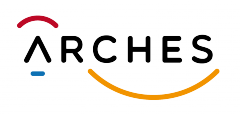ARCHES helps European museums to become barrier-free with 3D art replicas, mobile phone apps, games and sign language video avatars.
In this video, our British Sign Language avatar explains how ARCHES works. You can also see a more detailed version of this video and download the spoken text and a short description as a word document. The photographs in the video are by Sabine Gruber, one of the participants of the ARCHES research group in Vienna.
What is ARCHES and what have we done?
ARCHES stands for “Accessible Resources for Cultural Heritage EcoSystems”. With the support of the European Union, ARCHES has brought together disabled people, technology companies, universities and museums. Together, they have developed technological solutions, such as tactile reliefs made with the latest 3D modelling techniques, barrier-free apps and games for smartphones and tablets, together with sign-language avatars are the cutting-edge technologies. The technologies have been co-designed and tested by more than 200 disabled people in Spain, Austria and the UK.
The core of the project are four participatory research groups. They have been meeting in six museums, during more than two years. Their experiences and suggestions have helped researchers develop new accessibility tools for museums. We have documented the process and the results in academic papers, presentations and How-To-Guides. To find more about this, please have a look at our Results.
Besides the above introduction video, we also have created a video about the research methodology, which you can see below. All videos are subtitled and translated into sign language. Please note that these videos, and all other content is also available in German and Spanish.
You can also browse our other menus, to find the dates of our workshops, get to know the people behind ARCHES and download useful materials.
Please feel free to contact us to find out more about the project.
In this video, it is our participants who explain how ARCHES works. You can download the spoken text and a short description of the video as a Word document.
